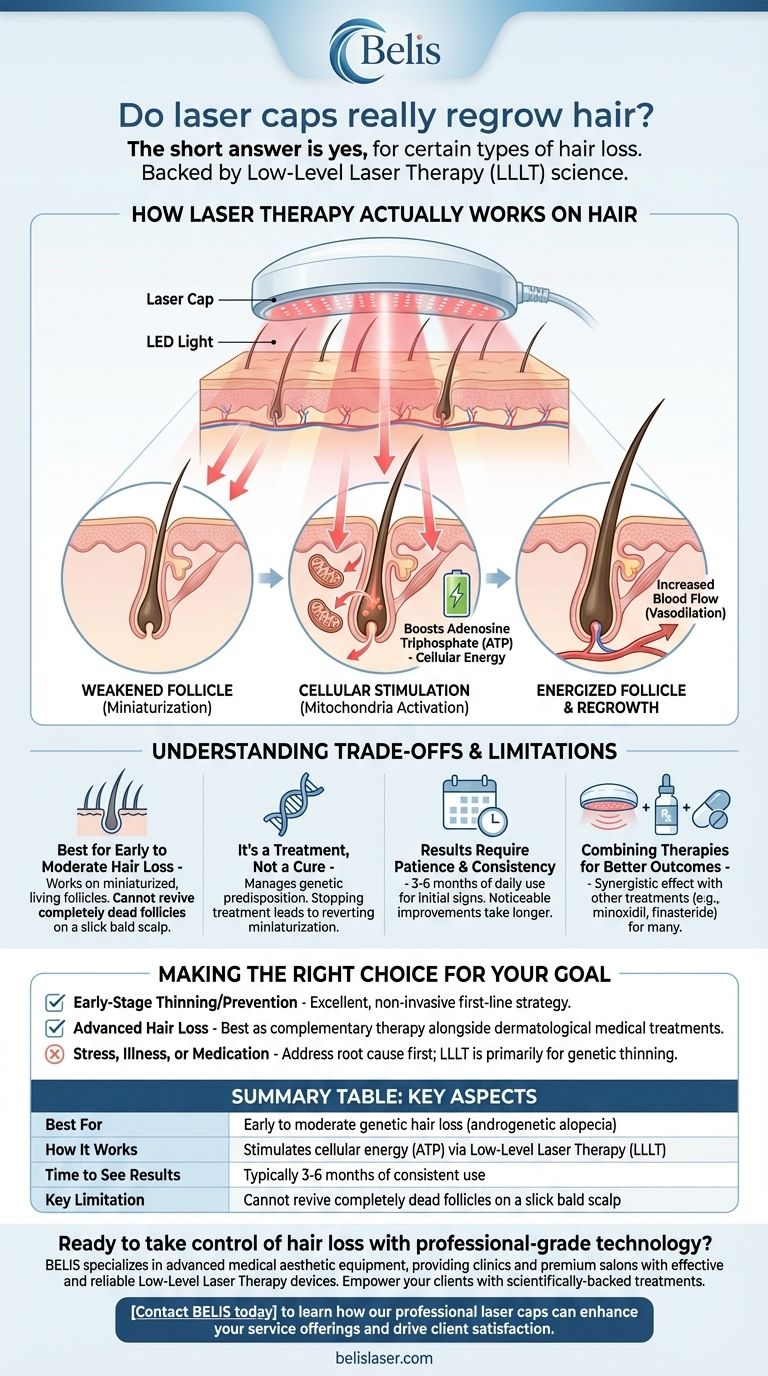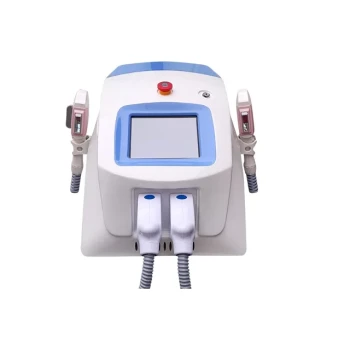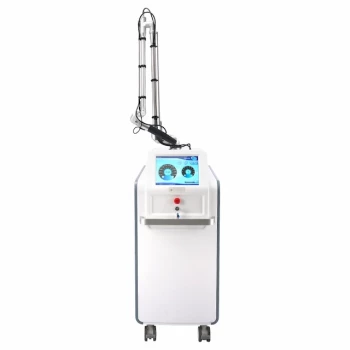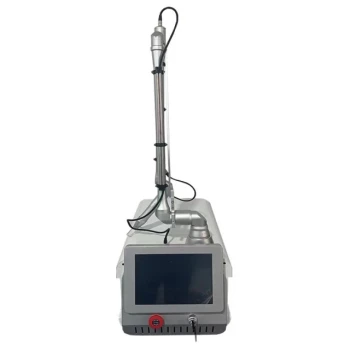The short answer is yes, for certain types of hair loss, laser caps can be an effective tool for regrowing hair. Backed by the science of Low-Level Laser Therapy (LLLT), these FDA-cleared devices are designed to stimulate hair follicles, increase hair density, and slow the progression of genetic hair loss in both men and women. They are not a miracle cure, but a legitimate medical treatment.
While laser caps can effectively stimulate weakened hair follicles to promote growth, their success is not universal. Efficacy depends on the underlying cause of your hair loss, the stage of progression, and most importantly, consistent, long-term use. They work to energize living follicles, not to revive dead ones.

How Laser Therapy Actually Works on Hair
Laser caps do not use the hot, cutting lasers you see in movies. Instead, they employ a grid of medical-grade lasers and LEDs to deliver a gentle, low-energy light directly to the scalp in a process known as Low-Level Laser Therapy (LLLT) or photobiomodulation.
The Science of Cellular Stimulation
This specific wavelength of red light penetrates the scalp to reach the base of the hair follicles. It's absorbed by the mitochondria, which are the powerhouses inside your cells.
Think of it like recharging a weak battery. The light energy boosts the production of adenosine triphosphate (ATP), the universal energy currency of cells.
Energizing Weakened Follicles
In genetic hair loss (androgenetic alopecia), follicles miniaturize and weaken over time, producing thinner, shorter hairs before eventually stopping altogether.
The increased ATP from LLLT provides these struggling follicles with the cellular energy they need to fight miniaturization, remain in the growth phase (anagen phase) longer, and produce thicker, healthier hair shafts.
Improving Blood Flow
LLLT also promotes vasodilation, which means it helps widen the blood vessels in the scalp. This increased circulation delivers more oxygen and vital nutrients to the follicles, further supporting a healthy growth environment.
Understanding the Trade-offs and Limitations
To make an informed decision, you must understand what laser caps can and cannot do. Objectivity is critical when considering this investment.
Best for Early to Moderate Hair Loss
LLLT is most effective on hair follicles that are miniaturized but still alive. It works to reverse the thinning process and strengthen existing, weakened hair.
It cannot bring back follicles from a completely bald, slick scalp where the follicles are dormant or have died off. This is why early intervention is key.
It's a Treatment, Not a Cure
For genetic hair loss, a laser cap is a management tool. The underlying genetic predisposition remains.
If you stop the treatment, the follicles will likely revert to their previous state of miniaturization, and the hair loss will resume. This is a long-term commitment.
Results Require Patience and Consistency
You will not see results overnight. Studies, such as one from 2014 that noted significant improvement, often measure progress over months.
It typically takes at least 3 to 6 months of consistent use (e.g., 25-30 minutes every other day) to see the first signs of reduced shedding, followed by noticeable improvements in thickness and density.
Combining Therapies for Better Outcomes
For many, a laser cap is a powerful part of a multi-pronged attack. It works externally by providing energy and can be safely used with other proven treatments like minoxidil (which works on blood flow) or finasteride (which works hormonally) to achieve a synergistic effect.
Making the Right Choice for Your Goal
A laser cap is a tool, and its value depends on your specific situation and expectations.
- If your primary focus is early-stage thinning or prevention: A laser cap can be an excellent, non-invasive first-line strategy to slow progression and improve the density of your existing hair.
- If you have more advanced hair loss: A laser cap is best used as a complementary therapy alongside medical treatments prescribed by a dermatologist to maximize results.
- If your hair loss is due to stress, illness, or medication: You must first address the root cause of the hair loss, as LLLT is primarily designed to combat genetic thinning.
Ultimately, a laser cap is a scientifically-validated device that empowers you to actively manage genetic hair loss, but understanding its role and limitations is the key to a successful outcome.
Summary Table:
| Key Aspect | Details |
|---|---|
| Best For | Early to moderate genetic hair loss (androgenetic alopecia) |
| How It Works | Stimulates cellular energy (ATP) in follicles via Low-Level Laser Therapy (LLLT) |
| Time to See Results | Typically 3-6 months of consistent use |
| Key Limitation | Cannot revive completely dead follicles on a slick bald scalp |
Ready to take control of hair loss with professional-grade technology?
BELIS specializes in advanced medical aesthetic equipment, providing clinics and premium salons with the most effective and reliable Low-Level Laser Therapy devices. Empower your clients with scientifically-backed treatments for hair regrowth and superior results.
Contact BELIS today to learn how our professional laser caps can enhance your service offerings and drive client satisfaction.
Visual Guide

Related Products
- Multifunctional Laser Hair Growth Machine Device for Hair Growth
- Multifunctional Laser Hair Growth Machine Device for Hair Growth
- Diode Laser SHR Trilaser Hair Removal Machine for Clinic Use
- Clinic Diode Laser Hair Removal Machine with SHR and Trilaser Technology
- Trilaser Diode Hair Removal Machine for Beauty Clinic Use
People Also Ask
- What is the success rate of LLLT hair treatment? Over 80% Success in Slowing Hair Loss
- Does IPL have risks? How to Ensure a Safe and Effective Treatment
- Are IPL machines safe? Understanding Skin Tone Compatibility for Safe At-Home Use
- How effective is LLLT for hair? Clinically Proven to Boost Hair Growth by 35%
- How often should I use red light therapy on my head? Find Your Optimal Treatment Schedule



















